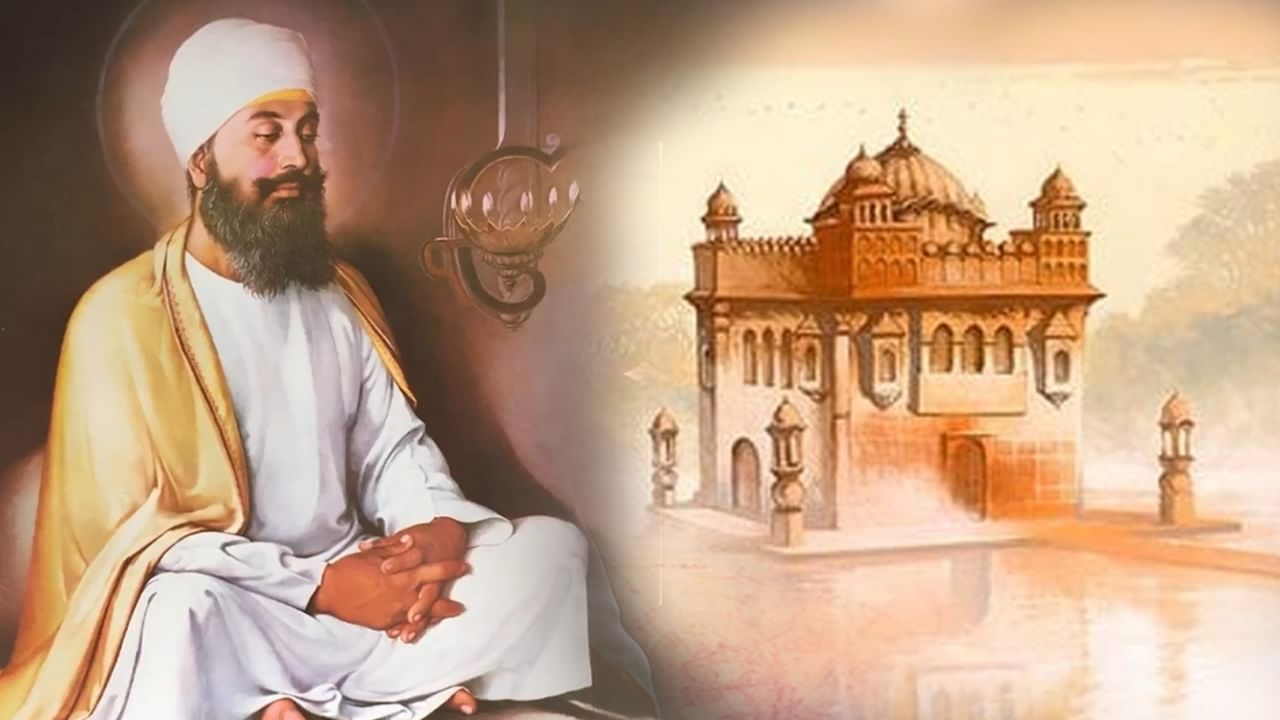350th Martyrdom Day of Guru Teg Bahadur (PM Modi/X)
Prime Minister Narendra Modi will attend a special program organized on the occasion of the 350th martyrdom day of Guru Tegh Bahadur in Kurukshetra, Haryana on Tuesday evening. Guru Tegh Bahadur was the ninth Guru of Sikhism, and he sacrificed his life to protect the religion and oppose forced conversion. Martyrdom Day is celebrated in his honour. As a Sikh Guru, he established Anandpur Sahib and contributed more than 700 hymns to the Guru Granth Sahib.
Guru Tegh Bahadur was born in the year 1621 in Amritsar. He was the youngest son of the sixth Sikh Guru Hargobind. He was of ascetic nature from the very beginning and because of this he was initially called by the name Tyag Mal. Later, he did a lot of work to promote Sikhism. Guru Teg Bahadur was very adept in religious philosophy and warfare skills. For his indomitable courage and bravery, he was given the title of “Teg Bahadur”.
Anandpur Sahib situated near Kiratpur
This was the period when most parts of the country were ruled by the Mughals. During the Mughal rule, Islam was being continuously promoted and people following religions like Hindu and Sikh were being tortured. Forced religious conversion was at its peak. At the time of Guru Tegh Bahadur, Aurangzeb was the Sultan of Delhi and was in the beginning of his 49-year reign. He became Sultan by removing his father Shahjahan from the throne.
Meanwhile, Sikhism was also slowly progressing. Tegh Bahadur established a new village about 5 kilometers away from the city established by his father, Kiratpur, which was named Anandpur. This city is now known as Anandpur Sahib. It is said that when Guru Teg Bahadur went on a tour of Eastern India in 1664, he was arrested by the Mughal army on the way and brought to Delhi.
Considering Sikhism to be against Islam, Aurangzeb had decided to sentence him to death, but at the request of a Hindu courtier, he was pardoned and released.
Guru Gobind born in Patna during former visit
After escaping from the Mughals, he again set out on a journey. During his earlier journey he reached Patna via Mathura, Allahabad (today Prayagraj). It was here that Guru Tegh Bahadur’s wife Mata Gujri gave birth to a son, who was named Gobind Rai. This Gobind later became known throughout the world by the name of Guru Gobind Singh.
It is about May, 1675. One day Guru Tegh Bahadur was sitting in a Sangat in Anandpur Sahib. Then a group of people from Kashmir met him. The group requested the Guru that their religion was in danger. Iftekhar Khan, the governor of Kashmir under Mughal emperor Aurangzeb, has ordered them to accept Islam or else they will all be killed.
Emperor Aurangzeb was afraid of the word ‘Bahadur’
On the other hand, in Delhi, Emperor Aurangzeb did not like the word ‘Bahadur’ in the name of Guru Tegh Bahadur and was afraid of it. He felt that the Guru was trying to call himself the true emperor and the Mughal Sultan was a fake emperor. Angered by this, Aurangzeb summoned him to Delhi. Also instructed the Guru to convert to Islam otherwise he would be killed.
Meanwhile, seeing the attitude of the Mughals, the Guru announced that after him his son Gobind Rai should be made the next Guru. When he reached Ropar after the announcement, he was arrested by the Mughal army along with some companions. He was kept imprisoned in Chandni Chowk, Delhi. While kept in jail, he was tortured a lot so that he would convert to religion. But despite the torture and constant suffering, he stood firm to protect his religion.
Aurangzeb did not understand the Guru’s teachings.
When the Guru was brought before Aurangzeb, the Emperor asked the Guru many questions regarding Hindu and Sikhism. Harbans Singh Virdi, who wrote the biography of Guru Tegh Bahadur, wrote in his book ‘Guru Tegh Bahadur Savior of Hindus and Hindustan’, “In Delhi, the Guru was taken to the Red Fort along with some of his companions.
Where Aurangzeb was asked why he was sacrificing his life for those who wear the sacred thread and those who get vaccinated? The Guru explained to him a lot with arguments but Aurangzeb did not understand anything and then ordered him to accept Islam or accept death.
Brutal murder of 3 colleagues in front of Guru
Following the order, Guru Tegh Bahadur was tortured again. Every possible attempt was made to torture the Guru to make him bow down. Three of his associates who were arrested along with him were brutally killed in front of his eyes. One was cut with a saw. So the second companion was thrown into boiling oil and the third was wrapped in cotton and tied to a tree and then set on fire.
Then on November 24, 1675, the death sentence of Guru Tegh Bahadur was to be executed. A large number of people were present at Chandni Chowk in Delhi. Qazi read out the fatwa to him. Then the executioner reached him and hit him on the head with his naked sword. The head was severed and thus Guru Tegh Bahadur attained martyrdom while helping Kashmiri Pandits against forced conversion and religious persecution.
Sisganj Gurdwara built where martyrdom took place
Sisganj Gurudwara was later built at the place where the Guru gave his martyrdom in Chandni Chowk. As the ninth Guru of Sikhism, Guru Tegh Bahadur guided the Sikh community from 1664 to 1675. He was known for his calm nature, deep spiritual understanding as well as for not bowing down to anyone.
Guru Teg Bahadur is also known as the Chadar of Hind. He sacrificed his life while doing it. It is said that after the martyrdom of the Guru, a large number of Kashmiri Pandits had accepted Sikhism.
